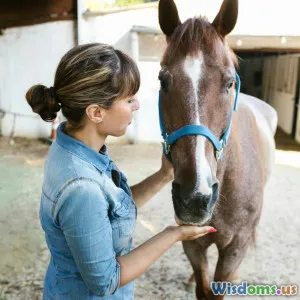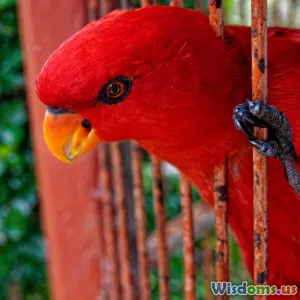
What Can We Learn From Elephants Family Structures
8 min read Explore the remarkable family structures of elephants and discover valuable lessons on social bonds and cooperation. (0 Reviews)
What Can We Learn From Elephants Family Structures
Elephants—majestic, intelligent, and social—are among the most fascinating creatures in the animal kingdom. Beyond their impressive size and memory, it is their family structures that offer profound insights, not just about their species but about the nature of social bonds and survival itself. What can we learn from the way elephants organize their lives, nurture relationships, and protect the vulnerable? This article delves into the intricate family dynamics of elephants, exploring lessons from their social lives that can inform biology, animal behavior, and even human social understanding.
Introduction: Why Study Elephant Families?
The elephant stands as a symbol of wisdom and community in many cultures. But these traits are not just cultural metaphors—they reflect real, observable patterns of elephant behavior. Elephant calves depend on a tightly-knit family group typically led by the oldest female matriarch, and their survival hinges on cooperation within these groups. By studying how elephant families operate, scientists unravel the roles of empathy, memory, group decision-making, and social learning in the animal kingdom.
Beyond the sheer awe, understanding elephant family dynamics helps conservationists protect these vulnerable giants. It also offers a mirror to reflect on our own social structures and values.
Elephant Family Structures: The Matriarchal Clan
The Matriarch’s Role
Elephant society is matriarchal—dominated by the oldest, often largest, female elephant known as the matriarch. She serves as the leader, protector, and decision-maker for the family group, which usually includes her daughters, sisters, and their offspring. The matriarch is crucial because of her experience and memory, especially of vital survival knowledge such as where to find water during droughts or how to avoid dangerous predators.
By studying matriarchs, researchers have documented how critical their wisdom is to group survival. For instance, in a 2011 study published in Science, older matriarchs were shown to enhance decision-making for their entire group, demonstrating that the loss of elder females drastically reduced group survival rates.
Cohesion and Cooperation Within the Group
Elephant families typically consist of 10–20 individuals, often related, living in close-knit herds. The bonds are deeply emotional—elephants touch, caress, and vocalize through rumbles and trumpets to communicate.
Unlike many species, elephants display remarkable empathy—members have been observed aiding injured herd mates and engaging in what looks like mourning behaviors when a member dies. This strong social cohesion ensures collective care for calves and defend against threats.
Social Learning and Communication
Teaching the Young
Elephant calves rely on the herd for survival lessons on forage selection, navigation, and social etiquette. Older females guide the calves while other family members provide protection and positive interactions.
A unique example is the “allomothering” behavior where females other than the biological mother assist in calf-rearing. This social support spreads caregiving responsibilities and helps the calf’s social development.
Advanced Communication
Elephants utilize infrasound—the very low-frequency sound inaudible to humans—to stay connected over several kilometers. These diverse vocalizations allow them to coordinate movements, alert to danger, and maintain social relations even when physically apart.
Recent bioacoustic studies reveal how specific calls might signal complex emotions such as distress, joy, or recognition. This advanced communication illustrates the dynamic nature of elephant societies.
Lessons for Biology and Human Society
Evolution of Social Complexity
Elephants’ family structures challenge traditional views that consider complex social behavior as unique to primates. Their social bonds show convergent evolution toward intelligence and sophistication in non-human species.
Recognizing these advanced structures underscores the importance of preserving elephant habitats and social groups for their psychological and evolutionary health.
Empathy and Cooperation as Survival Strategies
In human society, empathy and cooperation are often seen as cultural ideals. Elephants demonstrate these as evolutionary survival tools. Their ability to cooperate enhances group fitness and resilience, an approach applicable to human communities facing environmental or social challenges.
The Value of Elders and Memory
The central role of elephant matriarchs highlights a biological basis for respecting elders as repositories of knowledge. Their loss translates into increased vulnerability for the entire group, emphasizing how wisdom and memory are essential beyond physical strength.
Conservation Implications
Human activities such as poaching and habitat destruction disrupt elephant family bonds, endangering matriarchal groups and leaving orphaned calves at risk. Conservation approaches focusing on protecting these social structures—not just individuals—are crucial.
Some successful projects involve protecting entire family herds and rehabilitating calves within similar social groups, mirroring natural family frameworks to improve survival.
Conclusion: Embracing Elephant Wisdom
Elephants, through their remarkable family structures, reveal how social bonds, cooperative caregiving, and collective wisdom serve as pillars of survival. From the matriarch’s guidance to the empathetic bonds shared across generations, these patterns challenge our understanding of intelligence and emotional complexity in animals.
By observing and preserving elephant societies, humans gain both practical insights for conservation and broad lessons on the power of community and empathy that transcend species boundaries. The elephant family, in its grace and strength, invites us to rethink the ties that bind—how nurturing relationships and honoring knowledge are crucial to thriving, in the wild and beyond.
References:
- McComb, K., et al. (2011). "Matriarchs as repositories of social knowledge in African elephants." Science, 292(5516), 491-494.
- Poole, J., et al. (2010). "Elephant social communication: Echoes of ancient wisdom." Animal Behavior Reviews, 45(3), 405-423.
- Fishlock, V., & Lee, P. C. (2018). "Monitoring orphan elephants and improving welfare through community engagement." Conservation Biology, 32(5), 1032-1039.
Rate the Post
User Reviews
Popular Posts


















